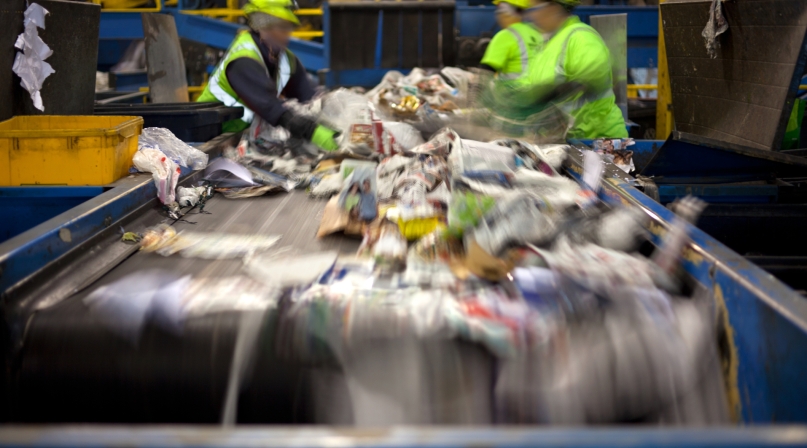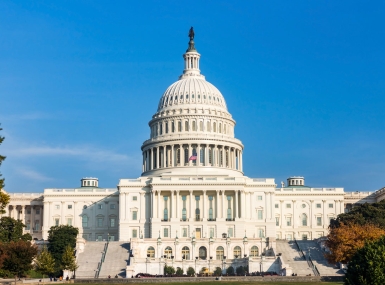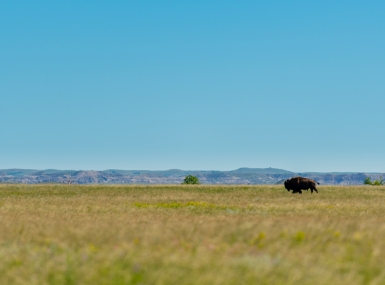EPA announces $58 million available for Solid Waste Infrastructure for Recycling grants
Author

Charlotte Mitchell Duyshart

Rachel Yeung
Upcoming Events
Related News

Key Takeaways
On September 16, the Environmental Protection Agency (EPA) announced $58 million in available funding under the Solid Waste Infrastructure for Recycling (SWIFR) grant program. The SWIFR program supports projects that enhance local government infrastructure for managing post-consumer materials.
What is the SWIFR program?
The SWIFR program offers grant funding to improve local infrastructure for waste and recycling management. SWIFR funds can be used to build or update solid waste infrastructure, lower greenhouse gas emissions, and create cleaner, more resilient communities. The program was authorized in the Save Our Seas 2.0 Act (P.L. 116-224) and funded through the Bipartisan Infrastructure Law, (P.L. 117-58).
Counties play a vital role in managing municipal solid waste (MSW) with growing demands to reduce landfill use, promote recycling, and cut greenhouse gas emissions. Counties can use SWIFR grants toward a wide range of high-impact projects to increase recycling, reduce contamination, and promote a circular economy for materials by investing in solid waste management infrastructure.
County project examples
Counties have already benefited from the SWIFR program:
Chaffee County, Colo.: The county received $3.9 million in SWIFR funding to design and construct a regional recyclable transfer station and a materials recovery facility to improve affordability for residents.
Durham County, N.C.: The county-owned Redwood Convenience Site was renovated and re-designed to collect MSW, yard waste, furniture, recyclables, and other products to reduce contamination in a historically disadvantaged neighborhood. The program awarded this project $3.3 million.
Chemung County, N.Y.: To meet the growing demand, the county plans to use $1.7 million in SWIFR funding to build a new composting facility on the site of a decommissioned wastewater treatment plant, transforming a blighted area and improving compost accessibility for the community.
How can counties apply?
Currently, $58 million is available for counties through the SWIFR program. EPA plans to make 20 to 30 awards, ranging from $500,000 to $5 million per award.
Counties can apply for SWIFR grants through December 20, 2024. Counties may also submit an informal Notice of Intent to Apply to the EPA by November 15, 2024, to streamline the process.
For more information on applying, visit the EPA's SWIFR for Communities Program page or grants.gov.
Resource
Legislative Analysis for Counties: The Bipartisan Infrastructure Law

Related News

U.S. House of Representatives passes SPEED Act and other permitting reform bills
On December 18, the U.S. House of Representatives passed the SPEED Act (H.R. 4776). The SPEED Act would strengthen county involvement in decision-making and make needed commonsense reforms to the federal environmental review process.

House Natural Resources Committee advances the Endangered Species Act Amendments Act of 2025
On December 17, the House Natural Resources Committee advanced the Endangered Species Act (ESA) Amendments Act of 2025 (H.R. 1897). The version passed by the committee adopted several changes from the initial bill and would address key county concerns by improving the implementation of the ESA. The legislation now awaits a floor vote before the whole U.S. House of Representatives.

Senators introduce bipartisan UPGRADE Act to support small and rural public water systems
On December 15, Sens. Lisa Blunt Rochester (D-Del.) and Roger Wicker (R-Miss.) introduced the Unincorporated Partnerships for Grant Resources, Assistance, and Drinking Water Enhancements (UPGRADE) Act (S. 3465), a bipartisan bill that would strengthen federal support for small public water systems and helps unincorporated communities access clean and affordable water.